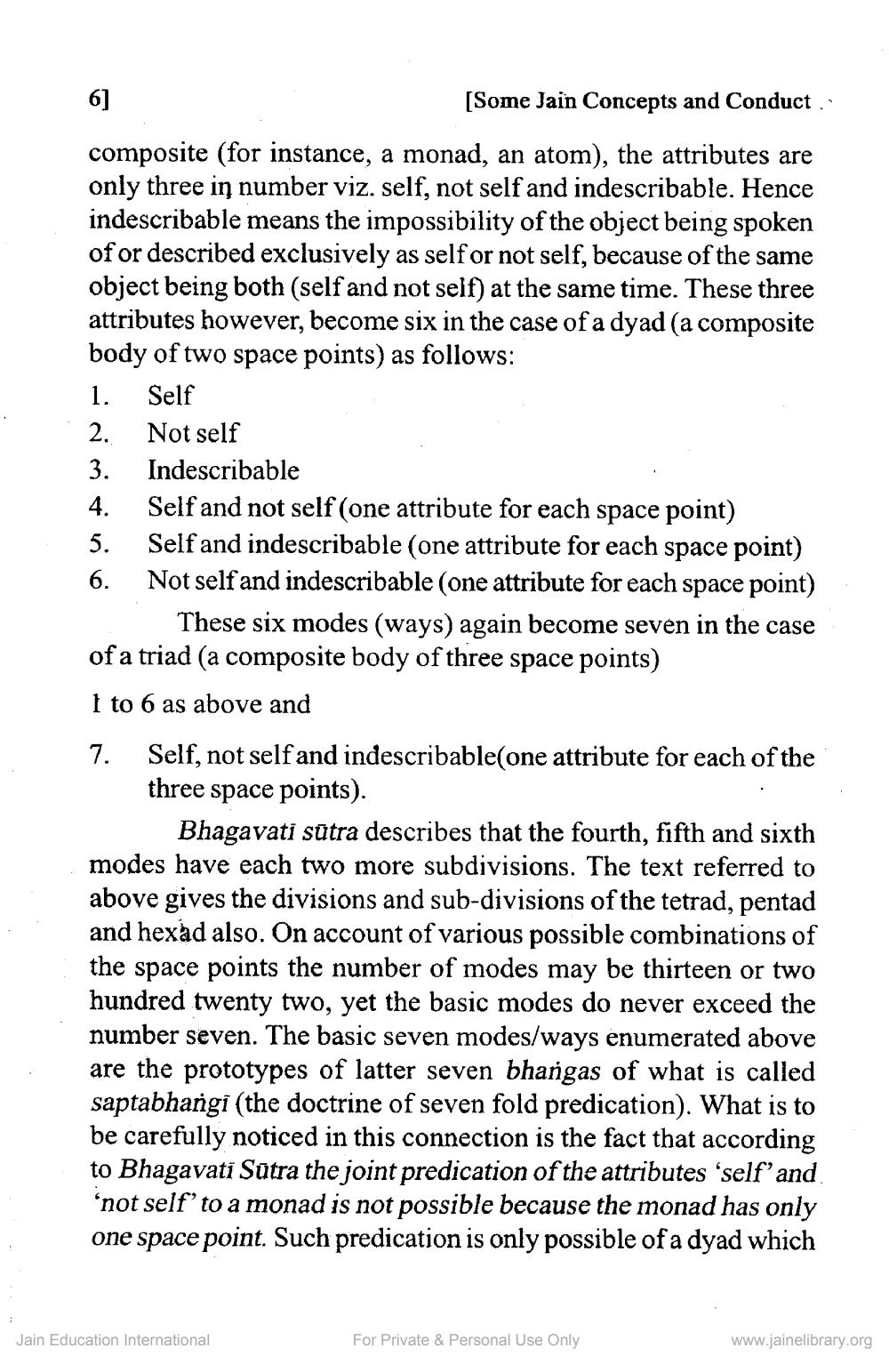________________
[Some Jain Concepts and Conduct
composite (for instance, a monad, an atom), the attributes are only three in number viz. self, not self and indescribable. Hence indescribable means the impossibility of the object being spoken of or described exclusively as self or not self, because of the same object being both (self and not self) at the same time. These three attributes however, become six in the case of a dyad (a composite body of two space points) as follows: 1. Self 2. Not self 3. Indescribable 4. Self and not self (one attribute for each space point) 5. Self and indescribable (one attribute for each space point) 6. Not self and indescribable (one attribute for each space point)
These six modes (ways) again become seven in the case of a triad (a composite body of three space points) I to 6 as above and 7. Self, not self and indescribable(one attribute for each of the
three space points).
Bhagavati sūtra describes that the fourth, fifth and sixth modes have each two more subdivisions. The text referred to above gives the divisions and sub-divisions of the tetrad, pentad and hexad also. On account of various possible combinations of the space points the number of modes may be thirteen or two hundred twenty two, yet the basic modes do never exceed the number seven. The basic seven modes/ways enumerated above are the prototypes of latter seven bhangas of what is called saptabhangi (the doctrine of seven fold predication). What is to be carefully noticed in this connection is the fact that according to Bhagavati Sūtra the joint predication of the attributes ‘self' and ‘not self' to a monad is not possible because the monad has only one space point. Such predication is only possible of a dyad which
Jain Education International
For Private & Personal Use Only
www.jainelibrary.org




